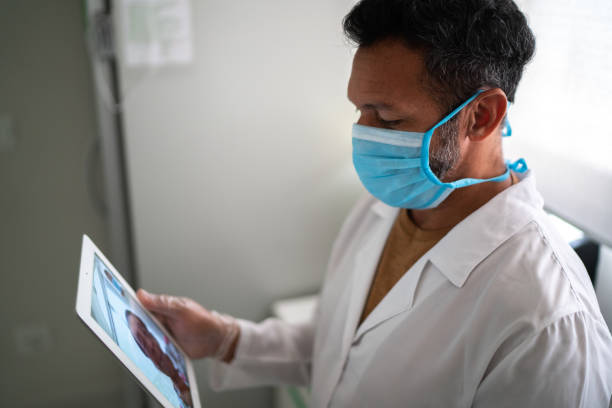Standardization in Patient Monitoring Systems
 |
| patient monitoring solutions |
In the fast-paced realm of healthcare, where technology continually evolves, the standardization of patient monitoring solutions stands out as a beacon of progress. This article delves into the critical role played by standardized systems, shedding light on their impact on healthcare delivery and patient outcomes.
Embracing Standardization in Patient Monitoring Systems
The advent of patient monitoring solutions has marked a paradigm shift in healthcare. These advanced systems provide real-time data, enabling healthcare professionals to make informed decisions promptly. As the demand for more sophisticated monitoring tools has risen, so too has the need for standardization.
The Power of Standardization
Standardization brings a sense of uniformity to patient monitoring systems. By establishing common protocols and interoperability standards, healthcare providers can seamlessly integrate various monitoring devices into their existing infrastructure. This not only streamlines workflows but also fosters a cohesive and comprehensive approach to patient care.
Enhancing Interoperability
One of the key benefits of standardization in patient monitoring solutions is the improved interoperability between devices. Standardized communication protocols allow different devices from various manufacturers to exchange data effortlessly. This interoperability not only simplifies data management but also ensures that healthcare professionals have access to a holistic view of a patient's health status.
Improving Accuracy and Efficiency
Standardized systems contribute to the accuracy and efficiency of patient monitoring. When devices follow common standards, the risk of errors and inconsistencies decreases. This reliability translates into more precise monitoring, enabling healthcare providers to detect subtle changes in a patient's condition promptly.
Navigating the Landscape of Standards
The landscape of standards in patient monitoring solutions is diverse, encompassing both international and industry-specific guidelines. Organizations such as the International Electrotechnical Commission (IEC) and the Health Level Seven International (HL7) play pivotal roles in developing and maintaining these standards.
International Electrotechnical Commission (IEC)
The IEC sets global standards for the design and performance of medical electrical equipment, including patient monitoring systems. Compliance with IEC standards ensures the safety and reliability of these systems, fostering trust among healthcare professionals and patients alike.
Health Level Seven International (HL7)
HL7 focuses on developing standards for the exchange, integration, sharing, and retrieval of electronic health information. Through HL7 standards, patient monitoring systems can seamlessly communicate with electronic health records (EHRs) and other healthcare information systems, promoting a unified approach to healthcare data management.
The Impact on Healthcare Delivery
Standardization in patient monitoring solutions has far-reaching implications for healthcare delivery. It not only improves the efficiency of individual healthcare facilities but also contributes to a more interconnected and collaborative healthcare ecosystem.
Streamlining Workflows
Standardized patient monitoring systems streamline workflows within healthcare facilities. With devices that communicate seamlessly and share data in a standardized format, healthcare professionals can devote more time to direct patient care instead of grappling with disparate systems.
Facilitating Telemedicine
The rise of telemedicine has been accelerated by standardized patient monitoring solutions. Healthcare providers can remotely monitor patients using standardized devices, ensuring continuity of care and timely intervention when necessary. This is particularly crucial in managing chronic conditions and providing remote consultations.
Driving Research and Development
Standardization opens the door to greater collaboration in research and development. When data from patient monitoring systems adhere to common standards, researchers can pool information from various sources, leading to more robust studies and insights. This collaborative approach accelerates innovation in healthcare.
Future Trends and Challenges
As technology continues to advance, the landscape of patient monitoring solutions is poised for further evolution. However, with these advancements come challenges that must be addressed to ensure the continued success of standardized systems.
The Rise of Wearable Technology
The integration of wearable technology into patient monitoring is a promising trend. Wearable devices offer the advantage of continuous monitoring in real-world settings, providing a wealth of data for healthcare professionals. Standardization will be key in ensuring the seamless integration of wearable devices into existing healthcare frameworks.
Addressing Security and Privacy Concerns
With the increasing reliance on digital health solutions, the need for robust security and privacy measures becomes paramount. Standardization efforts must include guidelines for safeguarding patient data, ensuring that healthcare providers and patients can trust the integrity and confidentiality of the information collected.
Conclusion
In conclusion, the standardization of patient monitoring solutions is a pivotal force driving positive change in healthcare. From improving interoperability to enhancing accuracy and efficiency, standardized systems contribute to a more cohesive and effective healthcare landscape. As we navigate the future of patient monitoring, a commitment to ongoing standardization will undoubtedly play a central role in shaping the next era of healthcare delivery.



Comments
Post a Comment